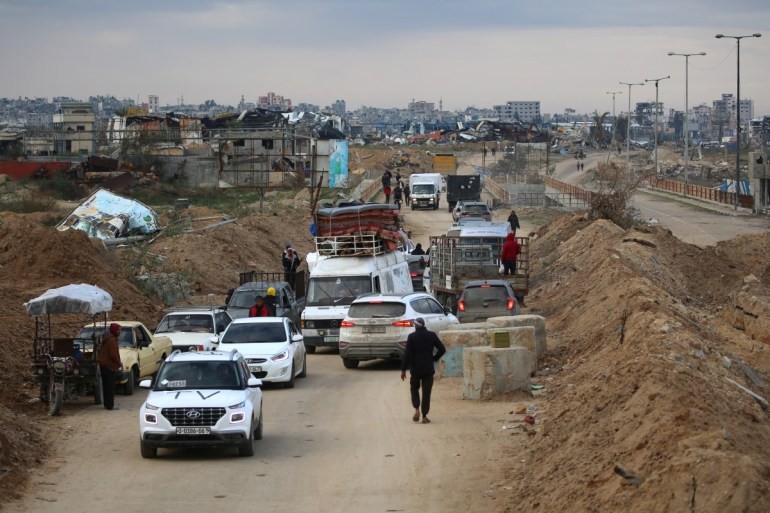
Israeli forces have completed their withdrawal from the Netzarim corridor, a strategic military zone that had divided the Gaza Strip into northern and southern sections, marking a key development in the ongoing ceasefire agreement between Israel and Hamas.
The four-mile stretch from the Israeli border to the Mediterranean Sea had served as a military deployment area, effectively cutting off Gaza City and other northern communities from the southern region. Following the withdrawal, hundreds of Palestinians began returning north, many discovering scenes of extensive destruction.
The pullback aligns with the January 19 ceasefire agreement, under which both sides have already exchanged hostages and prisoners - 16 Israeli hostages and 566 Palestinian prisoners have been freed. The first phase of the agreement anticipates the release of 33 hostages and 1,900 prisoners within three weeks, though Israel has indicated eight of the expected hostages are deceased.
Palestinians traveling north loaded vehicles with mattresses, water tanks, and other belongings. While the agreement allows vehicles to pass through uninspected on Salah al-Din Street, pedestrians can now use the coastal Rashid Street to cross into northern Gaza.
The withdrawal occurs as Israeli officials prepare to visit Qatar for discussions about the ceasefire's technical aspects. The more challenging second phase, which aims to establish a permanent ceasefire and complete Israeli withdrawal from Gaza, awaits further direction from Prime Minister Benjamin Netanyahu.
The conflict began after Hamas's October 7 attack on Israel, which resulted in 1,200 deaths and 251 hostages taken. Israel's subsequent military response has led to over 48,000 Palestinian casualties, according to Gaza's Hamas-run health ministry. UN assessments indicate about two-thirds of Gaza's buildings have sustained damage or been destroyed during the offensive.